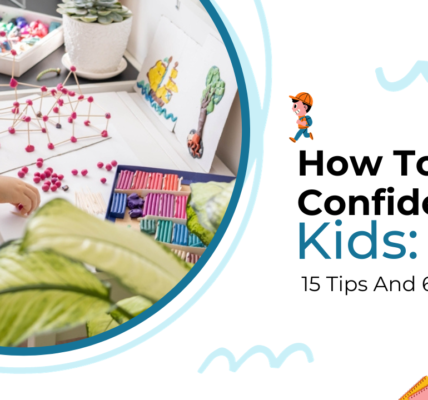Unlocking the Power of Self-Control: Engaging Activities for Kids
In the whirlwind of a child’s energy and curiosity, the development of self-control becomes a crucial milestone. As parents and educators, understanding how to teach and reinforce self control activities for kids sets the foundation for their future success. This article explores not only the strategies to instill self-discipline but also introduces creative and engaging activities designed to make the learning process enjoyable for young minds.
Understanding the Importance of Self-Control in Kids
Why is self-control crucial in a child’s development?
Self-control is more than just a behavioral trait; it’s a skill that lays the groundwork for a child’s emotional and social well-being. As children learn to manage their impulses and reactions, they develop resilience, focus, and the ability to navigate challenges effectively. The importance of self-control extends beyond childhood, influencing academic success, relationships, and overall life satisfaction.
Teaching Self-Control: Strategies for Success
1. Lead by Example
Children are keen observers, and they often emulate the behavior of adults around them. Demonstrate self-control in your actions, reactions, and decision-making processes. Whether it’s managing frustration or resisting temptations, your behavior serves as a powerful model for your child.
2. Establish Clear Expectations
Set clear and age-appropriate expectations for your child’s behavior. Providing guidelines helps children understand boundaries and expectations, fostering a sense of security. Communicate the reasons behind these expectations to help them grasp the importance of self-control.
3. Positive Reinforcement
Celebrate small victories. Acknowledge and praise your child when they demonstrate self-control. Positive reinforcement strengthens the connection between their actions and positive outcomes, motivating them to continue practicing self-discipline.
Engaging Self-Control Activities for Kids
1. The Traffic Light Game
Introduce the concept of self-control using a traffic light metaphor. Red signals stop, yellow indicates slow down, and green means go. Role-play scenarios where the child must respond appropriately to each color, promoting impulse control and decision-making.
2. Mindful Breathing Exercises
Teach children the power of mindful breathing to calm their minds and bodies. Simple exercises, such as “flower breathing” or “balloon breaths,” provide a tangible and enjoyable way for kids to manage their emotions.
3. Freeze Dance
Combine fun and learning with a freeze dance activity. Play music and encourage children to dance, but when the music stops, they must freeze. This activity enhances impulse control and listening skills in an entertaining way.
The Role of Creativity in Building Self-Control
Creativity is a potent tool in fostering self-control. Incorporating imaginative and playful elements into learning activities captures a child’s interest and makes the process enjoyable. From storytelling to interactive games, infusing creativity into self-control activities enhances engagement and retention.
FAQs: Addressing Common Queries about Self-Control in Kids
Q1: How early can I start teaching self-control to my child?
Ans 1: Start introducing basic concepts of self-control as early as preschool age, adapting activities as they grow.
Q2: Can self-control activities be integrated into daily routines?
Ans 2: Absolutely. Embedding activities into routines ensures consistent practice and reinforcement of self-control skills.
Q3: Are there activities suitable for children with special needs?
Ans 3: Yes, many adaptable activities cater to diverse learning needs, promoting inclusivity.
Q4: How can I make self-control activities more fun and engaging?
Ans 4: Incorporate elements of play, storytelling, and creativity to make activities enjoyable and memorable.
Q5: What role do parents play in reinforcing self-control?
Ans 5: Parents serve as crucial role models. Consistent reinforcement of positive behavior strengthens the impact of self-control activities.
Q6: Can self-control be taught through technology?
Ans 6: While technology can complement learning, hands-on and interactive activities are more effective in teaching self-control.
Q7: How can I handle resistance from my child during these activities?
Ans 7: Approach resistance with patience. Tailor activities to your child’s interests and gradually increase complexity.
Q8: Is there a connection between self-control and academic success?
Ans 8: Yes, fostering self-control positively impacts concentration, focus, and academic achievements.
Q9: Are there outdoor activities that promote self-control?
Ans 9: Absolutely. Outdoor activities like sports and nature walks provide opportunities to practice patience and self-discipline.
Q10: How can I ensure the lessons from these activities translate into daily life?
Ans 10: Consistency is key. Discuss and reinforce lessons from activities in everyday situations, making self-control a habit.
Conclusion
Nurturing self-control in kids is a dynamic journey that combines effective teaching strategies with engaging activities. By understanding the importance of self-control, implementing proven strategies, and infusing creativity into the learning process, parents and educators can empower children with a valuable skill set for a brighter future.
Remember, the key is to make the journey enjoyable, encouraging children to embrace self-control as a lifelong skill. For more insights on parenting, follow Parentology.





